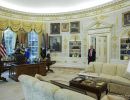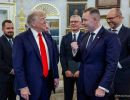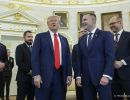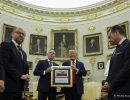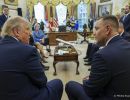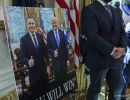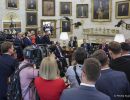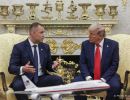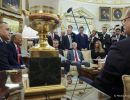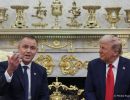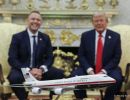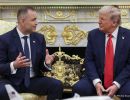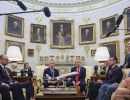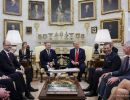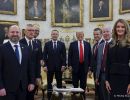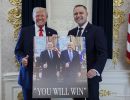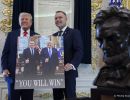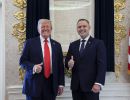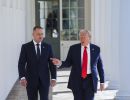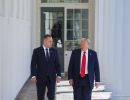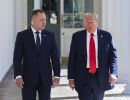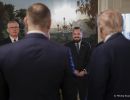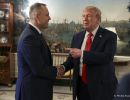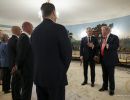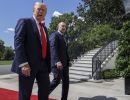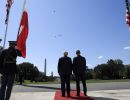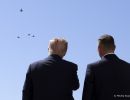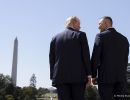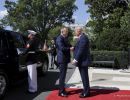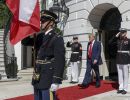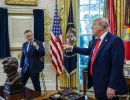Wyspa TV - Where You See People Achieve
SHARE ARTICLE
Select your language
Wyspa TV - Where You See People Achieve
SHARE ARTICLE
We have 1795 guests and no members online
Fot: prezydent.pl | Mikołaj Bujak/KPRP
Author/Editor: Maria Anna Furman
The first foreign trip of Poland’s new president was immediately to the capital of its key ally. Karol Nawrocki’s visit to the White House was officially presented as groundbreaking, both in terms of security and the economy. From the president’s own statements, those of his delegation, and fragments of conversations with Donald Trump, a coherent picture emerges: Washington treated Warsaw as a partner capable of bearing real burdens provided that political declarations are translated into the detailed engineering of implementation.
The central theme was security guarantees. The American side confirmed that U.S. soldiers will not leave Poland; on the contrary, there is room to expand their presence.
The delegation signalled that after the meeting, a working process would begin on solutions to increase the American military component in Poland, ranging from ideas of permanent presence to specific infrastructure and operational projects. On the Polish side, Minister Sławomir Cenckiewicz is to take the lead; on the American side, the defence secretary is mentioned in reports. The talks are to be coordinated with Poland’s Ministry of Defence. It is worth stressing that this is only the beginning of the path, with its pace and scale dependent on the security situation in the region and the upcoming American Global Force Posture Review.
The recurring “Fort Trump” concept, often raised in public debate, was framed pragmatically: not as a single monumental garrison, but as a sum of existing and expandable elements of permanent presence commands, bases, depots, logistical hubs integrated into NATO’s infrastructure network. In this view, the label itself is secondary; what counts is deterrence, interoperability, and the ability to project force rapidly.
In the closed-door talks, the Polish president presented a clear stance: Moscow cannot be trusted, and Russia can only be contained with hard instruments of sanctions, including secondary ones, and the real military strength of the West. From accompanying statements, it is clear that Poland’s expectations of the U.S. lean far more toward the “stick” than the “carrot.” These declarations align with Warsaw’s established line: no concessions on values, coupled with investment in both national and allied deterrence.
The meeting’s impact was reinforced by a symbolic gesture: an F-35 flyover honouring the late Polish pilot Major Krakowian, seen as an act of understanding and respect. This symbolism was tied to a concrete fact: in January, Poland is due to receive its own F-35s, part of broader arms contracts with the United States. The Polish side emphasised agency: defence spending and arms purchases do not make Warsaw a “free rider,” but a state co-financing the security of the region.
We invite you to subscribe if you appreciate our work and want to support us. By clicking the "Subscribe" button and contributing just £2 a month, you help us grow the Wyspa TV channel and gain access to exclusive premium content. Your support means a lot—thank you!
The second pillar of the talks concerned economic issues, centred on the Three Seas Initiative. Reports highlighted America’s readiness to give the project real substance first with energy, later with infrastructure. In practice, this means long-term LNG deliveries to Poland and more broadly to Central and Eastern Europe, as well as investments in pipelines, storage facilities, and interconnectors.
It is a mutually beneficial arrangement: for the U.S., a stable, growing market; for the region, independence from Russian energy and resilience against blackmail. From a political perspective, the Three Seas Initiative emerges as a vehicle for coordinating the interests of the entire belt of countries between the Baltic, Adriatic, and Black Seas, with President Nawrocki striving to act not only as Poland’s voice, but also as a spokesman for its neighbours.
Among the tangible outcomes was an invitation for the Polish president to attend next year’s G20 summit in Miami. The delegation’s interpretation is clear: this is not only a symbolic gesture but also recognition of the dynamism of Poland’s economy and a potential step toward joining the group of the world’s twenty largest economies. Even if the formal path will be long, simply having a seat at the table raises Warsaw’s political standing and facilitates discussions on investment, supply chains, and regional economic security.
In the public part of the meeting, Donald Trump emphasised Karol Nawrocki’s electoral victory and his own earlier endorsement, as well as the importance of the American Polish diaspora, which in this narrative constitutes one of the natural bridges between the two countries. This theme, though soft in appearance, has a hard, practical dimension: the diaspora represents voters, entrepreneurs, providers of talent and social capital who can materially support infrastructure or energy projects, provided that clear rules of the game are in place.
Behind the scenes and in media statements, the tone of conflict with the government in Warsaw was noticeable. Speeches by the president’s associates contained sharp criticism of the prime minister and the Ministry of Foreign Affairs; at the same time, assurances were made that defence matters would be coordinated with the Ministry of National Defence. This dual message, displeasure with the cabinet on the one hand and declarations of institutional cooperation on the other, marks a delicate line that Polish diplomacy will have to maintain if post-visit implementation work is to yield concrete results. At the implementation stage, politics and administration must speak with one voice, since this is where decisions are made on timetables, financing, and alignment with NATO planning.
The technical process after the visit is only just beginning. First comes the exchange of teams and mapping of options from the status of military presence to infrastructure and logistics.
The scale of a possible increase in forces will depend on the situation in the region. The greater the pressure from Russia, the greater the expectations regarding the American component.
The upcoming American Global Force Posture Review may become a turning point for decisions about deployments in Europe; Warsaw has declared it will actively “safeguard” its interests at this stage.
The implementation of existing contracts, including the delivery of F-35s, continues on schedule; further steps are planned to strengthen the country’s defence “immune system.”
The Polish and American sides are to move from declarations to projects, above all in LNG and transmission networks, with the entire region in mind.
A path toward the G20 is opening; in parallel, Donald Trump was invited to visit Poland, without a fixed date but with the suggestion of the following year.
In terms of political theatre, the visit fulfilled several functions at once: it demonstrated allied closeness, set the bar high in terms of expectations about the U.S. military presence, and outlined the economic vector of the Three Seas Initiative with American fuel in the tanks. At the same time, it left much work to be done “after hours”: inter-ministerial coordination, fitting the new arrangements into NATO and American strategic reviews, and finally, synchronising the message within the Polish state.
From this mosaic emerges an ambitious plan: to cement the U.S. presence in Poland not as a temporary anchor, but as a dispersed and resilient network of capabilities; to build a regional energy ecosystem with genuine participation of American LNG and capital; and to raise Poland’s position in global economic formats. Whether today’s “high note” turns into a full symphony will not be decided in the glare of cameras, but at the negotiators’ desks where every word from Washington must be translated into millimetres on a map and megawatts in the grid.
Author/Editor Maria Anna Furman
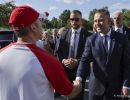

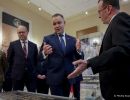
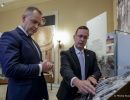
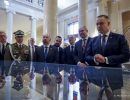
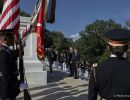
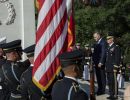
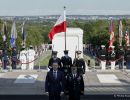

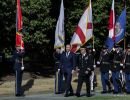
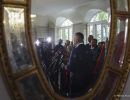
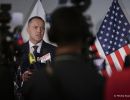
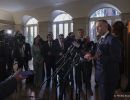
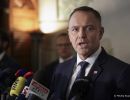
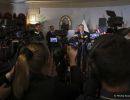
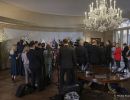
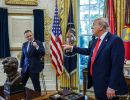
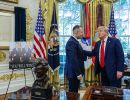
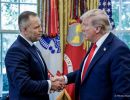
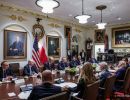
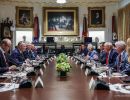
Fot: prezydent.pl | Mikołaj Bujak/KPRP
The United States is Poland’s key ally in terms of security and economy. The visit had strategic importance.
The discussions focused on security guarantees, the presence of US troops in Poland, energy cooperation, and the Three Seas Initiative.
No, the United States confirmed the continuation of its military presence, with readiness to even increase it.
It no longer refers to a single base, but to a network of commands, depots, and infrastructure integrated with NATO.
The parties agreed on long-term LNG supplies from the USA and on investments in transmission and energy infrastructure in the region.
It is a recognition of Poland’s growing economic role and a potential step towards joining the world’s top 20 economies.
The F-35 jets honored the memory of Major Krakowian and emphasized the importance of Polish-American defense contracts.
The diaspora was highlighted as a bridge between the two nations, supporting political, economic, and social cooperation.
The most important are coordination in defense and energy implementation, inter-ministerial cooperation, and a consistent diplomatic message.
